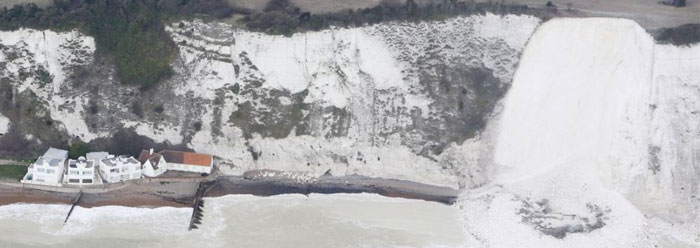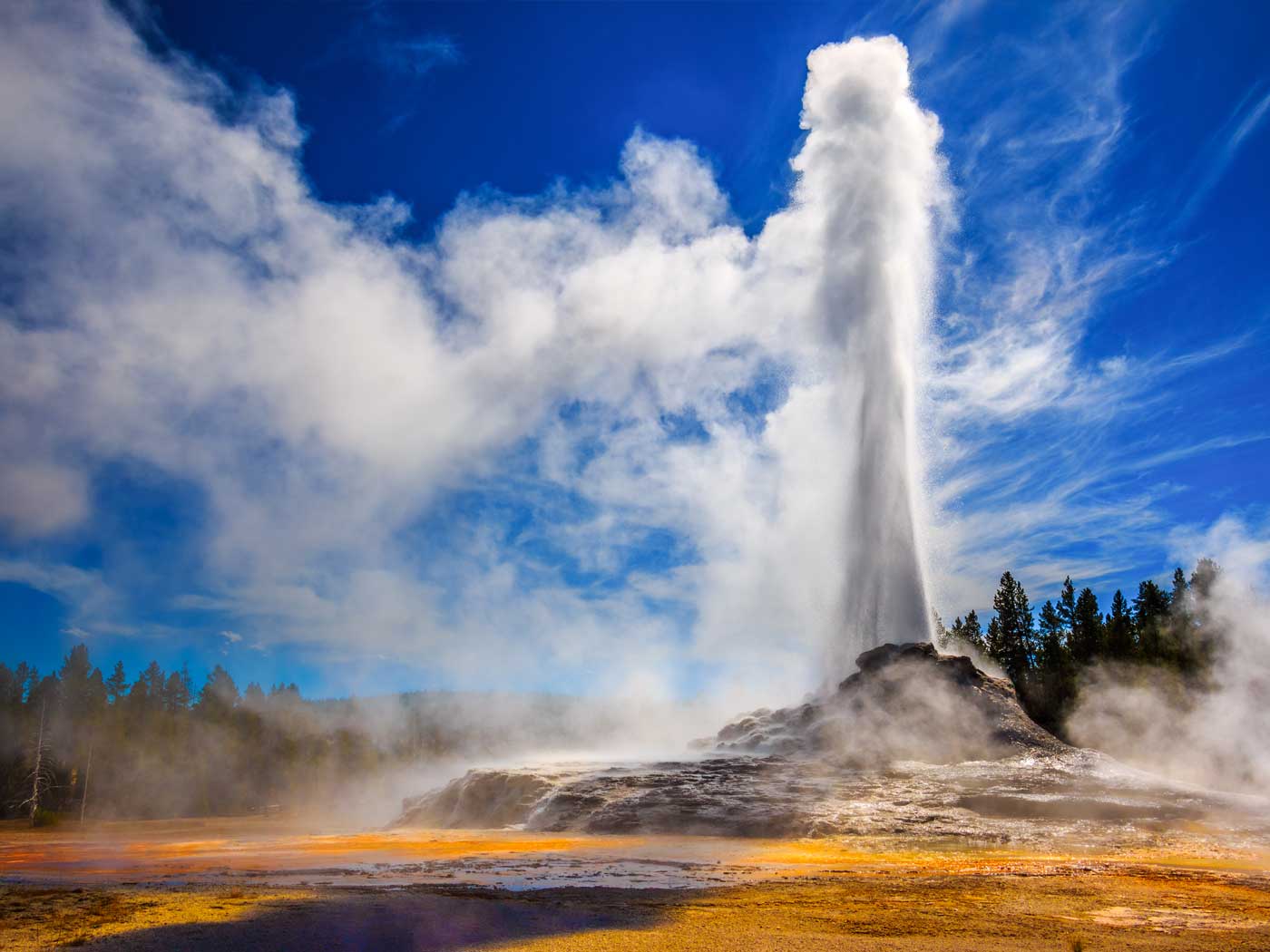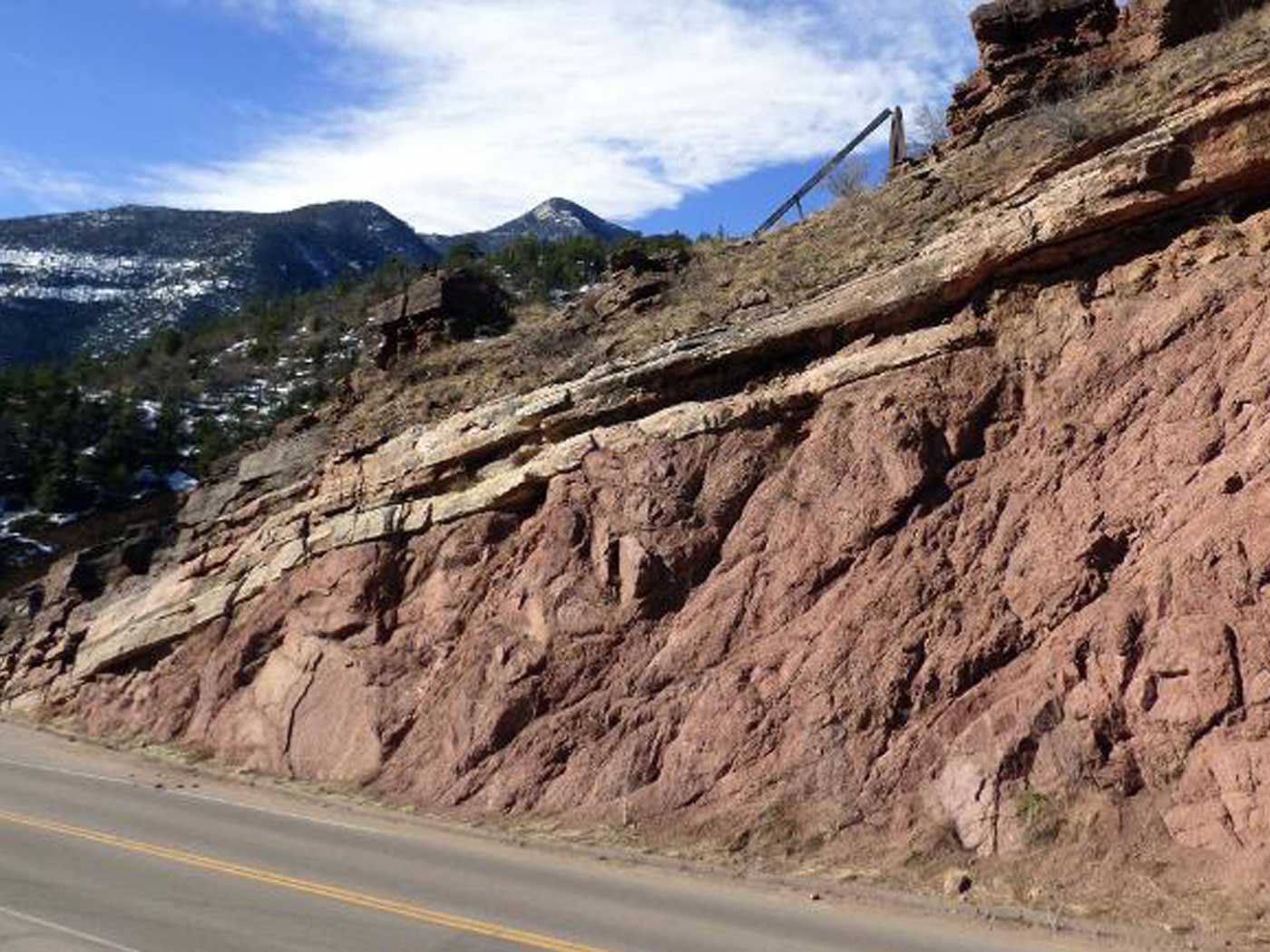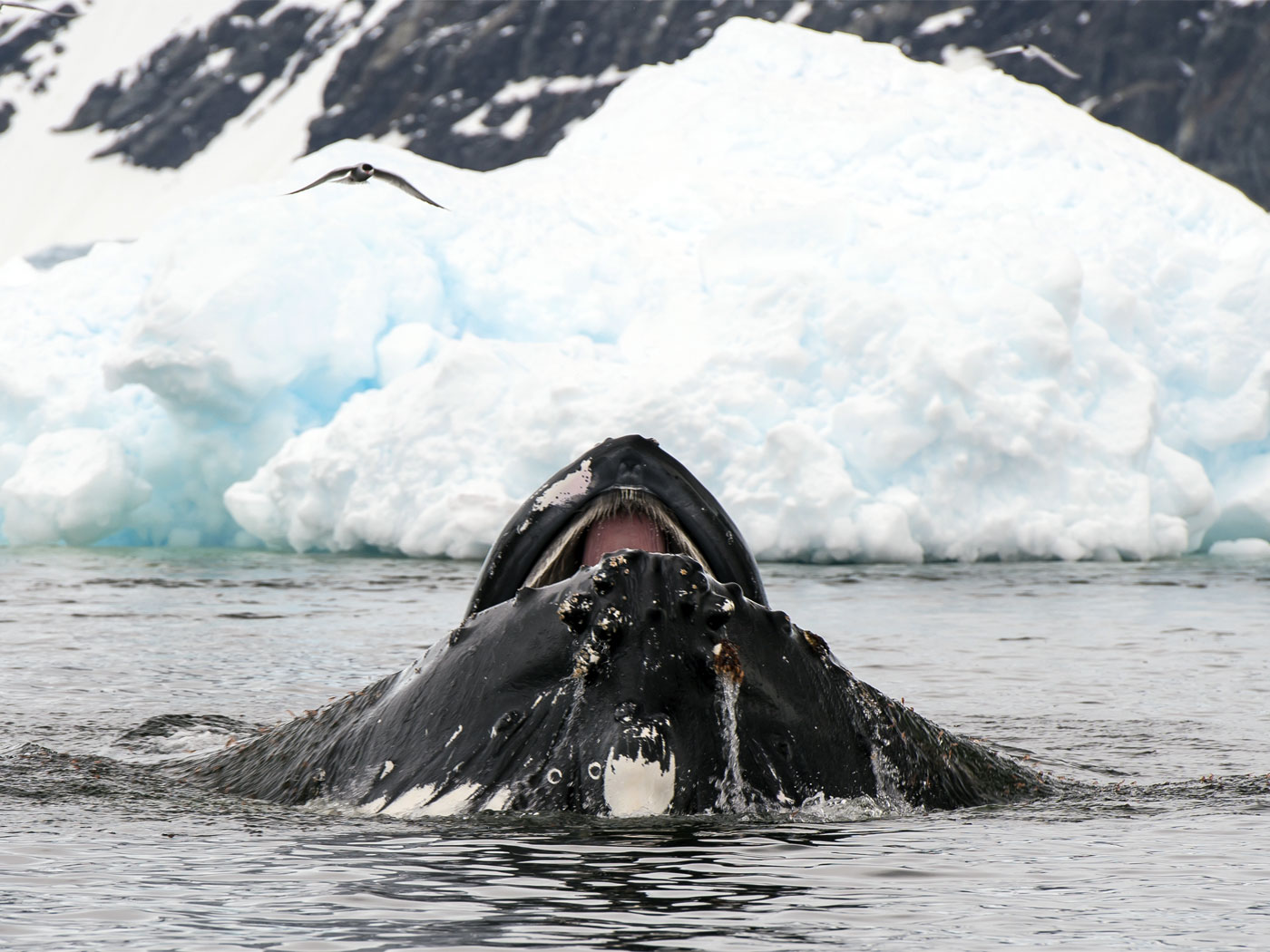Recently in Dorset, England, bad weather washed a massive section of a cliff into the sea revealing scores of ammonite fossils.1,2 Creation scientists are interested in this cliff fall because substantial erosion was accomplished in literally seconds. It didn't take hundreds of thousands to millions of years of slow and gradual erosion.
The cliff fall at Dorset isn't the only recent example of rapid and significant erosion. Uniformitarian geologists claim the famous White Cliffs of Dover, composed of calcium carbonate, were formed in the Cretaceous Period between 65 and 140 million years ago. But there is evidence of significant fracturing every decade or so causing authorities to urge visitors to stay far away from the cliff edge lest they topple into the ocean when the rocks give way. In 2001, a huge chunk fell into the English Channel followed by another large section in 2012. Uniformitarian geologists estimate 0.39 inches of cliff erosion per year. But we're seeing a lot—far too much—catastrophic erosion of these cliffs over a short time. At this catastrophic erosion rate, the White Cliffs of Dover would disappear in much less than a million years.
In July of 2015, a huge sheet of granite roughly 200 by 100 feet (about 2,400 tons) fell from the vertical face of Half Dome in Yosemite National Park in California.3 Geologists claim rock falls such as this occur about once per year in Yosemite Valley. This is obviously serious annual erosion. What would be the fate of Half Dome in just a million years of "normal" annual erosion?
One headline recently stated, "Climate can grind mountains faster than they can be rebuilt."4 The obvious scientific question is: If the Earth is billions of years old, why do we have mountains and cliff faces today?
Such rapid changes as described above backs the catastrophic-biblical model which states there can be much geologic work in a short time.
References
- Ward, V. Fossil hunters flock to Jurassic coast after cliff fall. The Telegraph. Posted on telegraph.co.uk December 29, 2015, accessed January 5, 2016.
- Sherwin, F. 2004. Ammonite Evolution? Acts & Facts. 33 (12).
- Massive rock falls off Half Dome in Yosemite. Yosemite News. Posted on myyosemitepark.com July 5, 2015, accessed January 5, 2016.
- University of Florida. Climate can grind mountains faster than they can be rebuilt. ScienceDaily. Posted on sciencedaily.com November 30, 2015, accessed January 15, 2016.
Image Credit: Copyright © 2013 J. Bennet. Adapted for use in accordance with federal copyright (fair use doctrine) law. Usage by ICR does not imply endorsement of copyright holder.
*Mr. Sherwin is Research Associate, Senior Lecturer, and Science Writer at the Institute for Creation Research.
Article posted on January 25, 2016.























